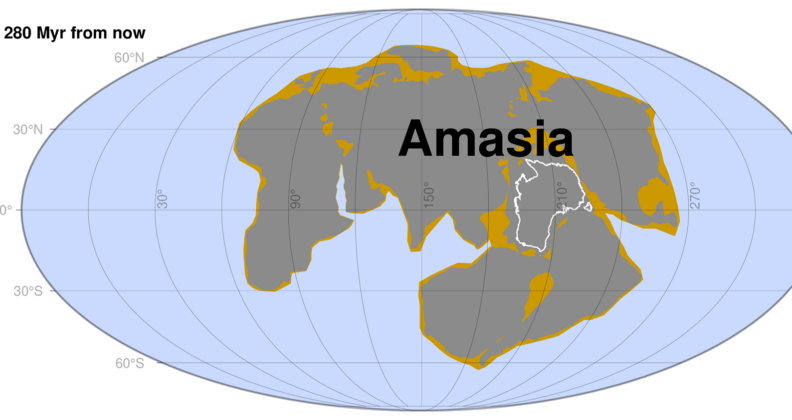The current form of our planet will not last forever, because the lithospheric plates are constantly moving. Although they move very slowly, they do not stop, so in millions of years the continents will not look like we know them today. About 300 million years ago, there were not several continents, but only one supercontinent called Pangea. It gradually split into the individual continents we know today. In the future, a supercontinent will form again. Researchers at the New Curtin University in Australia used a supercomputer to determine what the world would look like when the next supercontinent is formed.
Meet Amasia
According to their calculations, a new supercontinent of Amasia, a combination of present-day American and Asian continents, will be formed in 200 to 300 million years. A recently issued press release informs about it. So all the continents will eventually collide together.

Over the past 2 billion years, the continents have collided together several times to form a supercontinent. This is called the supercontinent cycle. It occurs every 600 million years. Over 700 million years ago, the previous supercontinent started breaking apart and began shrinking the Panthalassa super ocean. The ocean is gradually shrinking and will continue to shrink in the future. America and Asia join together to form Amasia. Below you can see an animation that shows how the individual continents will move over time.
Look into the future
Lead author Dr Chuan Huang, from Curtin’s Earth Dynamics Research Group and the School of Earth and Planetary Sciences, said the new findings were significant and provided insights into what would happen to Earth in the next 200 million years.
“The resulting new supercontinent has already been named Amasia because some believe that the Pacific Ocean will close (as opposed to the Atlantic and Indian oceans) when America collides with Asia. Australia is also expected to play a role in this important Earth event, first colliding with Asia and then connecting America and Asia once the Pacific Ocean closes.”
“By simulating how the Earth’s tectonic plates are expected to evolve using a supercomputer, we were able to show that in less than 300 million years’ time it is likely to be the Pacific Ocean that will close, allowing for the formation of Amasia, debunking some previous scientific theories.”
Abstract
Citation: “Earth’s known supercontinents are believed to have formed in vastly different ways, with two end members being introversion and extroversion. The former involves the closure of the internal oceans formed during the break-up of the previous supercontinent, whereas the latter involves the closure of the previous external superocean. However, it is unclear what caused such a diverging behavior of supercontinent cycles that involved first-order interaction between subducting tectonic plates and the mantle. Here we address this question through 4-D geodynamic modeling using realistic tectonic setups.
Our results show that the yield strength of the oceanic lithosphere plays a critical role in determining the assembly path of a supercontinent. We found that high oceanic lithospheric strength leads to introversion assembly, whereas lower strength leads to extroversion assembly. A theoretically estimated reduction in oceanic crustal thickness, and thus its strength, during Earth’s secular cooling indicates that introversion was only possible for the Precambrian time when the oceanic lithosphere was stronger, thus predicting the assembling of the next supercontinent Amasia through the closure of the Pacific Ocean instead of the Indian-Atlantic oceans. Our work provides a new understanding of the secular evolution of plate tectonics and geodynamics as the Earth cooled.”
Resources/references:
Chuan Huang, Zheng-Xiang Li, Nan Zhang, Will Earth’s next supercontinent assemble through the closure of the Pacific Ocean?, National Science Review, 2022;, nwac205, https://doi.org/10.1093/nsr/nwac205
Credit: Autors, YT screenshot















